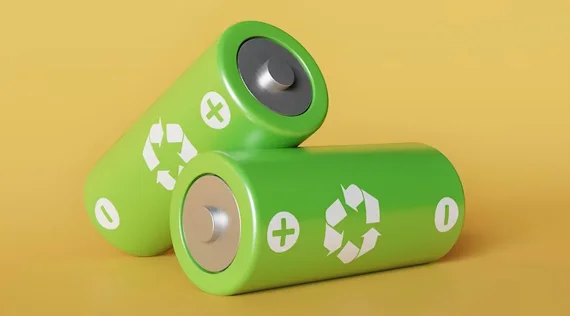
New research out of the University of Michigan shows that cracks in the positive electrode of lithium-ion batteries reduce charging times.
“Many companies are interested in making ‘million-mile batteries‘ using particles that do not crack. Unfortunately, if the cracks are removed, the battery particles won’t be able to charge quickly without the extra surface area from those cracks,” said Yiyang Li, corresponding author of the study published in Energy & Environmental Science. “On a road trip, we don’t want to wait five hours for a car to charge. We want to charge within 15 or 30 minutes.”
Li’s team believes the findings apply to more than half of all electric vehicle batteries, in which the positive electrode—or cathode—is composed of trillions of microscopic particles made of either lithium-nickel-manganese-cobalt oxide or lithium-nickel-cobalt-aluminum oxide.
He explained that, theoretically, the speed at which the cathode charges comes down to the particles’ surface-to-volume ratio. Smaller particles should charge faster than larger particles because they have a higher surface area relative to volume, so the lithium ions have shorter distances to diffuse through them.
However, conventional methods couldn’t directly measure the charging properties of individual cathode particles, only the average for all the particles that make up the battery’s cathode. That limitation means the widely accepted relationship between charging speed and cathode particle size was merely an assumption.
“We find that the cathode particles are cracked and have more active surfaces to take in lithium ions—not just on their outer surface, but inside the particle cracks,” said Jinhong Min, a doctoral student working in Li’s lab. “Battery scientists know that the cracking occurs but have not measured how such cracking affects the charging speed.”
Measuring the charging speed of individual cathode particles was key to discovering the upside to cracking cathodes, which Li and Min accomplished by inserting the particles into a device that is typically used by neuroscientists to study how individual brain cells transmit electrical signals.
“Back when I was in graduate school, a colleague studying neuroscience showed me these arrays that they used to study individual neurons. I wondered if we can also use them to study battery particles, which are similar in size to neurons,” Li said.
Each array is a custom-designed, 2-by-2 centimetre chip with up to 100 microelectrodes. After scattering some cathode particles in the center of the chip, Min moved single particles onto their own electrodes on the array using a needle around 70 times thinner than a human hair. Once the particles were in place, he could simultaneously charge and discharge up to four individual particles at a time on the array and measured 21 particles in this particular study.
The experiment revealed that the cathode particles’ charging speeds did not depend on their size. Li and Min think that the most likely explanation for this unexpected behaviour is that larger particles actually behave like a collection of smaller particles when they crack. Another possibility is that the lithium ions move very quickly in the grain boundaries—the tiny spaces between the nanoscale crystals comprising the cathode particle.
Li thinks this is unlikely unless the battery’s electrolyte—the liquid medium in which the lithium ions move—penetrates these boundaries, forming cracks.
The benefits of cracked materials are important to consider when designing long-lived batteries with single-crystal particles that don’t crack. To charge quickly, these particles may need to be smaller than today’s cracking cathode particles. The alternative is to make single-crystal cathodes with different materials that can move lithium faster, but those materials could be limited by the supply of necessary metals or have lower energy densities, Li said.



| Copper Scrap View All | |
| Alternator | 0.40 (0) |
| #1 Copper Bare Bright | 4.17 (-0.03) |
| Aluminum Scrap View All | |
| 356 Aluminum Wheels (Clean) | 0.81 (0) |
| 6061 Extrusions | 0.71 (0) |
| Steel Scrap View All | |
| #1 Bundle | 360.00 (0) |
| #1 Busheling | 380.00 (0) |
| Electronics Scrap View All | |